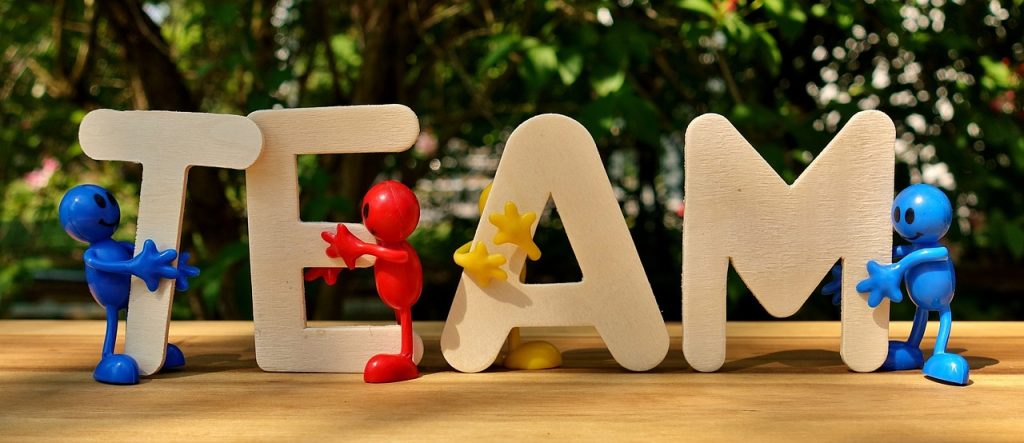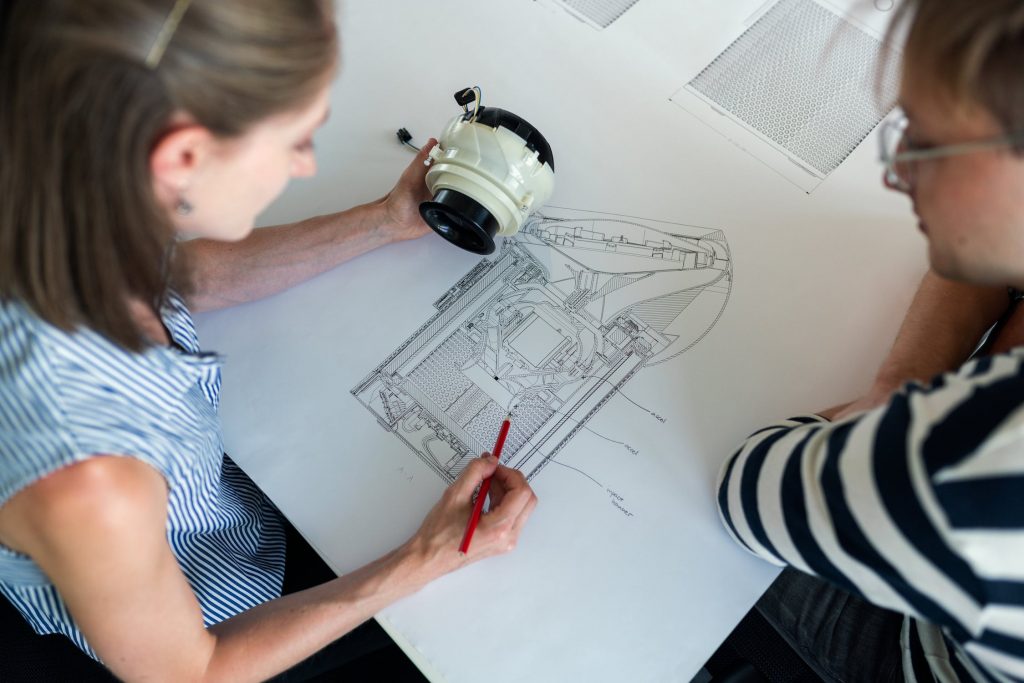A New Era of Possibility

GUEST POST from Douglas Ferguson
OpenAI released ChatGPT on Nov 30th, 2022, which has captivated the public due to its applicability to various needs and asks and near-human accuracy at astounding efficiency. AI has traditionally elicited mixed reactions, ranging from excitement and anticipation to fear and hesitation. With the introduction of this revolutionary technology, questions about its implications are beginning to arise. How will this affect knowledge workers? Which career paths are likely to become obsolete? What new knowledge do marketers, creators, programmers, etc. need to acquire to make the most of this changing landscape?
These are valid and important questions to consider, and it is essential that we have open and honest conversations about the potential impacts of AI on the workforce and how its emergence is making us and our co-workers feel. As the workplace continues to evolve and adopt more of these tools, It is critical to explore some common fears people have about AI and discuss ways that individuals and organizations can adapt, maintain the best parts of our humanity, and thrive alongside these technological advancements.
The tools now available to the public are incredibly powerful and are ushering in a momentous time of discovery. The availability of such powerful AI tools has opened up new avenues for discovery and innovation in various fields. GPT-3, Claude, Sparrow, and the technology they will inspire all have the potential to revolutionize the way we communicate, learn, and interact with information. If we approach this game-changing tech with humanity, curiosity, and excitement, we can easily step into a world where AI is not only a tool but also a collaborator.
A common reaction to experiencing the power of AI is a feeling of cheating or that we are replaceable, this leads to discussion and debate about whether people will lose their jobs. It’s important to remind ourselves that this feeling is not new or unique to AI. Consider innovations like the printing press or the internet. While initially seen as disruptive, more opportunity has always been generated than lost. New roles and markets emerge in times of massive change.
One unique thing about AI technologies, in particular, is that there are advancing and improving at an astonishing rate. This means that it’s an exciting time to play and watch and learn what can be done with these tool and how they might shape our work in the future. As we learn more and gain clarity and confidence, we are better suited to experiment with new approaches to our work. From there, we can consider how our jobs might shift and take on new requirements and meanings. If the AI can now automate 80% of your work, what can you do with that 80% that is now gifted back to you? Are you able to spend focus on the 20% that really provided the most value? The part that speak to your humanness?
While many people will shift habits and behaviors, some will shift into complete new roles with new titles that never existed before. We’ve already seen this happen in the AI ecosystem. A role that has specifically caught my attention is the “Prompt Engineer” I fondly like to refer to them as AI Facilitators. If you’ve spent any time with ChatGPT, you’ve learned that getting great results from Chat GPT is similar to getting great results from a room of people you are facilitating. You have to ask GREAT QUESTIONS.
Software companies seeking to add GPT capabilities into their products are hiring Prompt Engineers to create the best prompts for GTP to tailor the responses for their product use cases. Think of it like constructing the perfect MadLib. Consumers of a product will interact with the product and maybe fill in some data or make some requests in the app. The app will then submit that request and data to GTP by inserting the pieces into this perfectly crafted MadLib that will generate the ideal result for the end user. Prompt Engineers design these prompts and Madlib-like structures to get desired outcomes from the AI model.
It’s fun to watch the job boards and careers pages for AI consultancies and AI-forward tech companies to see what trends are emerging around new job titles. Reflecting on these observations and considering what that means for overall trends and how those might emerge in your work can lead to valuable insights. Take a look. What ideas surface for you when you consider potential new roles in this emerging landscape?
If nothing else, remember to be curious! It’s totally normal to feel overwhelmed, confused, scared, frustrated, dubious, and generally concerned. Take time to move past those reactions and cultivate the generative curiosity needed to learn and understand the technology. When we are curious, we see connections that are non-obvious, and when these pathways are illuminated are able to design our future more effortlessly.
Putting It Into Action
As I mentioned previously, questions have always been paramount in facilitation, which is still true for ChatGTP and other language modules. While these tools are amazing, you won’t get far if you don’t know how to ask good questions or know what questions you should be asking. Questions are uniquely human. No other being discovered has this ability. And, when we engage in self-reflection, introspection, and empathy towards others, we connect more deeply with our humanity—leading to a better understanding of our thoughts, emotions, and values as well as how we are connected to those around us. Thoughtful inquiry cultivates a greater sense of awareness, compassion, and connection within our teams, organizations, and, eventually the AIs alongside us.
Master facilitators have spent years honing their skills and developing their ability to attune to and guide the flow of energy, attention, and conflict in a room. Successful facilitation in the future will also require mastering the art of collaborating with machines. Adapting and extending existing practices to maximize new potential with AI will be the norm. In preparation for this new age of collaboration, we’ve started experimenting by employing proven facilitation techniques while interacting with ChatGPT and other tools. The familiarity of the tools provides some comfort and confidence as we experiment with the unknown.
Start with classic facilitative questions to help guide ChatGPT toward your outcomes:
- How might we clarify and align the goals and objectives?
- How might we identify the tone and perspective?
- How might we recognize empathetic requirements that are considerate to our audience?
- How might we brainstorm and generate ideas for prompts and test them?
- How might we evaluate and prioritize prompts with core values in mind?
If you are a leader, facilitation is key to your work, or you are curious to grow into these areas, start by familiarizing yourself with the capabilities and nuances of the tools. You’ll want to start with any tool-specific tutorials to familiarize yourself with the UI and functions of the tool. Once you are on the tool and ready to start experimenting, take a moment to explore and learn how to craft questions that yield the best outcomes. As with any good question, think about the context of your audience, what do they know, the purpose of your question, what’s the format of a really good response, and even the types of answers you’d like to avoid. Remember that we have spent our entire lives asking, communicating, and presenting questions to other humans, and it will take some time and experimentation to master questions for machines.
I have been experimenting with ChatGPT and have made some progress on how to get the most interesting results.
- Always make sure to start with your purpose, and think clearly about why this is important. Find ways to incorporate your why into the questions and prompts you construct for ChatGPT.
- Consider the personality of, or style of, the response that might be most valuable to you. Would you like to have your meeting summarized from the perspective of an investigative journalist, Charles Dickens, or Gandhi Think about the tone, attitude, and mindsets you seek to convey.
- Remember that ChatGPT is there to perform tasks for you. What is the thing you want it to generate? An essay, a poem, a love letter, a summary, a report, or computer code.
- One noteworthy feature of ChatGPT is that it can reference up to approximately 3000 previous words from the conversation. Take advantage of this is beneficial for requesting revisions and getting the tool to generate variations and adaptations until you get results you are happy with. Give it specific instructions on how to improve.
- Include specific qualities or requirements you have for defining a good response. This may not be immediately apparent when you first start, and you’ll need to rely on iterating and refining to get the answer you want. Over time you’ll get a handle on the criteria and instructions that are important to you. Save these for the next time you use ChatGPT.
We have created a template laying out these steps in further detail so you can play with ideas and help streamline this process.
ChatGPT has lots of potential but how do we get the most out of it? It’s all about the prompt. Writing and tweaking prompts specific to your needs is key to unlocking the best results. Use this tool template to think through what you’d like to achieve and how to construct the ideal prompt for ChatGPT to get you there.
Collaborating With AI
Practice, practice, practice! Learn to ask the right questions and become more comfortable collaborating with AI. This is key because, eventually, AI will work with us on our teams. We need to become accustomed to how they operate and how they “think”, as it will be different than collaborating with humans. We have generations of experience collaborating with humans, and now is the time to start building that same experience with machines.
Imagine you are on a team of five, four humans and one AI.
- What does collaboration with AI look like, and how does it feel?
- What questions will the team ask the AI?
- How will we learn to work and collaborate in new ways?
- What does it mean to invite AI in as a team member?
- How might we notice and encourage it to have more ethical and inclusive answers?
Inviting the AI in as a team member means giving it context and teaching it how to work best with us. We can help it learn our culture and values to better align with our mission, vision, and purpose. Building a strategy to incorporate AI as a team member is not unlike working with people in an organization. When a company’s strategy is aligned with its values and purpose, it can create a more meaningful and fulfilling work experience for employees. AI can be an extension of this, reinforcing desired norms and behaviors. Creating a safe environment allowing people to bring their whole selves to work and tap into their innate sense of purpose and connection with others. This can, in turn, help employees lean deeper into their humanity and contribute to a more positive, ethical, and sustainable organizational culture.
Transcending The AI
There are many examples of how technology has allowed us to put aside trivial matters and elevate as humans. AI is currently simplifying tasks of all kinds by efficiently performing mundane tasks on demand. For example, AI design tools are able to nearly eliminate the creation of UI design, allowing designers to spend their time considering the strategy, conceptual design, how to elevate user experience, and how to address accessibility or other concerns. While the simple example is handy for examples sakes, the potential is much greater than just moving from tactical work to strategic work. As these tools advance and provide deeper functionality for us, we will shift into a higher state of work, finding deeper connections and relating at levels never before experienced in the workplace.
Humans are exceptionally adaptable organisms, and the AI revolution is a time that calls for us to lean into that ability. As with any change, we must also be considerate of long-term systemic implications and sustainability of our actions and work. As you embark on your journey, consider the ethics of what you or your organization are asking of the AI. Think about the second and third-order effects of what you are asking. If the AI excels at doing this task, what might result from that and so on and so forth? What are the long-term consequences of that? Finally, consider if we might want to pick a different starting point or provide more conditions to properly guide or constrain the AI.
I’m excited about what the future holds for us. As we explore these times together, join me as I focus on appreciating and respecting the diversity of experiences and perspectives that make us all unique. As we begin to create our first relationships with AI, remember to reach firmly into the deepest depths of our humanity.
Article first published at VoltageControl.com
Image credit: Pixabay
 Sign up here to join 17,000+ leaders getting Human-Centered Change & Innovation Weekly delivered to their inbox every week.
Sign up here to join 17,000+ leaders getting Human-Centered Change & Innovation Weekly delivered to their inbox every week.

![]() Sign up here to join 17,000+ leaders getting Human-Centered Change & Innovation Weekly delivered to their inbox every week.
Sign up here to join 17,000+ leaders getting Human-Centered Change & Innovation Weekly delivered to their inbox every week.







